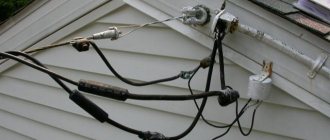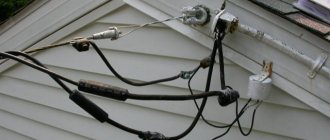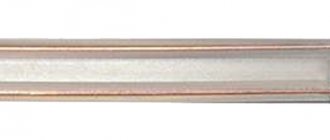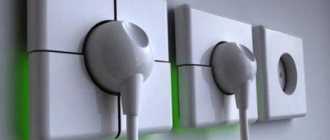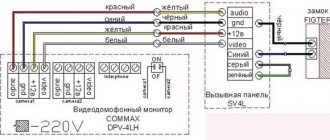Home » Household appliances » Connecting equipment » Installation of a diesel generator
If you have already selected a quality diesel generator, then you can now begin installing it. This is a responsible process, since the service life of the power plant will depend on the correctness of the equipment in the future. Installing a diesel generator can also be done independently.
In this article, you will learn the steps to install a diesel generator indoors and outdoors. We have also tried to provide you with the basic requirements for each of these methods.
Choosing a location for installation
First you need to choose the location where your power plant will be installed in the future. This must be done before you purchase it. Otherwise, you may not calculate the dimensions. Options for installing a diesel generator can be as follows:
- In a special soundproof casing.
- On an open frame.
- In a container that allows for reliable protection from the environment.
The last option is considered the most common today. In this case, you will no longer need to look for a special room in the building where you can install a diesel generator. When choosing a specific location, you also need to pay attention to local conditions. Accordingly, if you plan to install it in the country, then it is better to place the diesel generator indoors. This will protect it from theft. Thanks to the use of a diesel generator, it is possible to provide temporary power supply to the site during construction.
If you purchased a generator model in a special noise-insulating casing and want to place it indoors, then remember that it must meet the following requirements:
- There must be protection from external factors.
- Provide good ventilation.
- Provide the required level of illumination.
- There must be unobstructed access to the generator.
- The doorway must be of sufficient size.
Connection diagrams
Before connecting, it is worth drawing a special diagram on which the diesel power plant is indicated in the form of a circle with a wavy line inside.
Particular attention should be paid to connecting a generator with automatic start of 380 V, the peculiarity of which is that when the inputs are disconnected (when an accident occurs), the diesel generator set is automatically started and the loads are connected
There are also emergency ways to connect a diesel power plant, which have their drawbacks, for example:
- When connecting through a socket, there is a possibility of overloading the wire, causing the generator to suddenly stop (at best). This connection method does not allow monitoring the appearance of electricity on the main line.
- If there is a connection to a switchboard, then it is worth remembering that it is accompanied by a number of difficulties that can cause serious problems with the generator and electrical networks.
- When connecting through a switch, do not forget that this option is only suitable for people who are well versed in electrical engineering. An inexperienced person can cause damage to the generator and networks even during simple startup.
- Connection via AVR unit. Its disadvantage is the lack of additional protection during startup and installation.
When connecting a power plant, attention must be paid to ensuring galvanic isolation, which, if necessary, will allow energy to be transferred between circuits without electrical contact between them. Some people who have purchased a diesel generator wonder: what is the difference between a single-phase and three-phase connection? They should know that all connections in both diagrams are the same, but the number of power wiring differs
Some people who have purchased a diesel generator wonder: what is the difference between a single-phase and three-phase connection? They should know that all connections in both schemes are the same, but the number of power wiring differs.
An important point is grounding: it is accompanied by the creation of a full-fledged circuit designed to periodically remove static voltage from the body of the unit.
The ground electrode can be made from a metal rod 1.5–2 m long, a clamp, soft copper wire and a bolt.
Foundation preparation
When preparing the foundation, you must act carefully. This is due to the fact that vibration may occur during generator operation. If the foundation is truly strong, then this will prevent the diesel generator from moving during operation. To comply with all conditions, it is necessary to make a foundation weighing two or three times the weight of the generator. The depth must be at least 15 cm. Experts also report that the foundation itself must have no slopes.
When pouring the foundation, you also need to provide for the installation of mounting fasteners. In the future, they will make it possible to more reliably secure the diesel power plant. Here you can also learn about automatic generator starting.
Cooling
To ensure the correct operation of the diesel power plant and extend its service life, it is necessary to ensure good operation of the generator cooling system during installation. First of all, we are talking about ensuring the normal and efficient operation of the built-in cooling system of the diesel generator. The power plant must be installed in such a way that nothing interferes with the functioning of the cooling system.
If the installation of a diesel generator is carried out in an existing room, for example, in a garage, basement or boiler room, it is necessary to make sure that the room has normal ventilation
Also, when considering a room to house a power plant, it is important to comply with all necessary fire regulations, since a diesel generator is a source of increased fire hazard
How to reduce vibrations
To reduce vibrations that may occur during operation of the power plant, special vibration isolators are provided in the design. Of course, they cannot always reduce vibrations and therefore, you need to take additional measures. Here are the basic recommendations to help reduce vibrations:
- It is necessary to ensure rigid attachment to the foundation.
- Special shock absorbers should be used, which should be installed between the base of the diesel generator and the foundation.
- Install the exhaust muffler system and soundproofing casing.
Also an effective way to reduce vibration would be to implement a flexible connection to the exhaust gas exhaust system. When connecting wires, flexible conductors must be used.
Diesel generator: first start. Step-by-step instruction
Here are step-by-step instructions for starting a diesel generator for the first time using the SKAT generator as an example.
1.
Unpack the generator and make sure there is no damage.
2.
Remove tools and other accessories.
3.
Check the package.
4.
Install the chassis if required by the model.
5.
Install the battery: connect the power wires to the terminals, remembering to observe the polarity.
6.
On the instrument panel, find the emergency oil level drop indicator - we will need it now. Keep in mind: as long as there is no pressure in the oil system, the unit will not start.
7.
Fill the oil sump - unscrew the dipstick plug, measure out the required amount of oil - it can be found on a sticker on the generator itself, or in the instructions. Fill with oil and tighten the dipstick plug.
Important! It is necessary to check the oil level on the dipstick before each use of the generator. 8
The lubricant must be distributed throughout the entire system before starting - to do this, squeeze out the decompressor and crank the crankshaft with the electric starter until the emergency oil pressure lamp on the indicator goes out
8.
The lubricant must be distributed throughout the entire system before starting - to do this, squeeze out the decompressor and turn the crankshaft with the electric starter until the emergency oil pressure lamp on the indicator goes out.
To avoid burning out the electric starter, its operating time should not exceed 5 seconds (several attempts of 5 seconds each). What is a decompressor? The compression of a diesel engine is higher than that of a gasoline engine, which makes it difficult for both manual and electric starters to rotate the shaft.
The decompressor makes it easier to start the engine; it opens the exhaust valve slightly, breaking the tightness of the combustion chamber.
Attention! You cannot use a decompressor to stop the engine!
9.
Fill the fuel tank. The diesel fuel system is a complex, precise mechanism that is sensitive to fuel quality. Use fuel from reliable suppliers.
Attention! Don't forget to change fuel according to the season. Summer diesel fuel: pour point: -5 °C
Winter diesel fuel: pour point: -35 °C. Arctic diesel fuel: pour point: -50 °C.
10.
Open the fuel valve. 11. Remove air from the fuel system in the following order:
- fill the fuel tank full;
- open the fuel tap;
- unscrew the fuel pump nut 1-1.5 turns;
- move the engine decompressor to the open position and hold it;
- Use the starter to turn the engine crankshaft until fuel leaks from under the nut without air bubbles;
- Tighten the fuel pump nut securely;
- Unscrew the fuel injector nut 1-1.5 turns;
- Use the starter to turn the engine crankshaft until fuel leaks from under the nut without air bubbles;
- Tighten the fuel injector nut securely;
The generator is ready to go!
Starting with a manual starter
- Repeat all steps to start the power plant using an electric starter.
- At points where it is recommended to rotate the engine with an electric starter, do it manually.
- Now the launch itself, what is important here is not the strength, but the correct technique
:
- Pull the starter handle until there is noticeable resistance - this corresponds to the top “dead” point of the engine, return the starter handle to its original position.
- Press the decompressor and release it (it should remain in this pressed position, and when unwinding it will turn off).
- Now, with a strong, long movement, we pull out the starter handle (we spin the engine) - when moving, it is not sharpness that is important, but the amplitude and strength of the jerk.
- If, when starting, you pull your hand under your arm (a short movement is not enough to start), then the flywheel will begin to spin in the opposite direction and painfully jerk your hand.
It is not always possible to completely remove air from the system, so the engine may operate unstably for several seconds or minutes. When the load is connected, the system will get rid of excess air faster.
Stopping the generator
Allow the generator to cool for 2-3 minutes at idle speed, with the ignition key in the OFF position, the fuel will shut off and the engine will stop.
Carrying out electrical installation work
The most difficult stage when connecting a diesel generator is the installation and connection of electrical circuits. Basically, electrical installation work consists of the following stages:
- First you need to connect the electrical distribution board. It is also necessary to provide an automatic backup power supply circuit.
- High-quality installation and marking of power auxiliary circuits must be ensured.
- Now you can start connecting all cable lines.
- To ensure better protection, it is necessary to install an individual grounding circuit.
Below we have placed a video in which you can learn how to connect a diesel generator to the network at home.
It is important to know! You can find out all installation requirements in the PUE rules.



